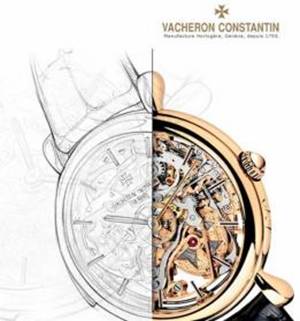
February 24, 2005 The wristwatch, for most of the last century, has been the ultimate male Gizmo! One of the few accepted male adornments, the pocket watch evolved into the wristwatch and subsequently into a key indicator of social status, particularly in the upper echelons of society. So what do the world's most powerful men wear? An article this week in Russia's leading newspaper addressed this question and the results make fascinating reading. The world's most powerful man wears a US$50 Timex, whilst other heads of state wear timepieces that cost up to US$500,000 plus.
A brief history of personal chronography
The mechanical clock came into being early in the 14th century, and the first public clock was erected in Milan, Italy around 1335. Clocks slowly began to make their way into homes later that century and portable timepieces were first manufactured for sale in the early 16th century. Initially, these very large portable timepieces were carried in a pocket, did not have a minute hand (minute hands did not appear until 1670), and the use of protective glass over the face of the watch did not come about until the 17th century.
As the personal, portable timepiece grew in usage, the pocketwatch became the choice of gentlemen. Less than 100 years ago, no self-respecting gentleman would be caught dead wearing a wristwatch. In those days of yore, real men carried pocket watches.
Wristlets, as the wrist-worn variants were called, were reserved for women, and considered more of a passing fad than a serious timepiece. No-one believed that the miniaturization necessary to make a watch so small could be achieved without a loss of accuracy. In fact, wrist watches were held in such disdain a century ago that "many a gentlemen were actually quoted to say they "would sooner wear a skirt as wear a wristwatch." War swings public opinion As has so often been the case with new technology, its introduction and subsequent performance under the most exacting conditions (i.e. war) was the catalyst for a change in public perception.
Though armies had been equipping their fighting personel with pocketwatchs as early as the 1880s, the convenience of the wrist-worn device became a major tactical weapon in the Boer War (1899-1902) for coinciding simultaneous battlefield initiatives and from that point forth the wristwatch's appeal to men began to grow.
In the case of the wristwatch, it was its widespread military use during WW1 that turned the tide of public opinion. Switzerland had been the home of the timepiece from the beginnings of the craft and science of clock-making and its export statistics in the immediate post-war period make illustrative reading.
In 1920, roughly one quarter of Swiss personal timepiece exports were wristwatches, while 75% were pocket watches. By 1934, demand for the wristwatch had seen its market share grow to 65%, and immense R&D was lavished on wristwatch technology, resulting in ongoing miniaturization, more accuracy, self-winding mechanisms and greater durability in the form of water and shock resistance.
A brief and well-written history of the subsequent development of the wristwatch can be found here.
The Pravda article tells the rest of the story of what can be seen on the wrists of the Russian-centric mini-survey of very rich and important people, with Patek Philippe watches seeming to lead in terms of the number of VIPs sporting them, with a sprinkling of Audemars Piguet, Omega and Rolex.
We suspect that if the survey were extended tacross all say, heads of state, you'd also find names such as Girard-Perregaux, Cartier, Jean Dunand, Piaget, Tag Heuer, Breitling, Jaeger Le Coultre, Breguet, Franck Muller and Bvlgari cropping up regularly.
The most expensive watch worn by a head of state according to the Pravda article is the US$540,000 Constantin Vacheron watch worn by Italian Prime Minister and mega-wealthy industrialist Silvio Berlusconi.
And just for the record, the most expensive wristwatch ever sold was a 1933 gold Patek Phillipe with 24 complications.
The watch had been the final chapter in a game of elite one-upsmanship played out through the 1920s between New York financier Henry Graves Jr. and automotive innovator James Packard. Each successively commissioned more than a dozen timepieces, each better than the other's until Graves commissioned the ultimate watch feasible at that time, a watch that took three years to design and five years to produce.
According to Forbes magazine, "When completed in 1933, the watch had a different horological function for each hour of the day and included a chart of the nighttime sky over Graves' home in New York."
The watch sold at auction by Sothebys in 1999 for US $11,003,500.